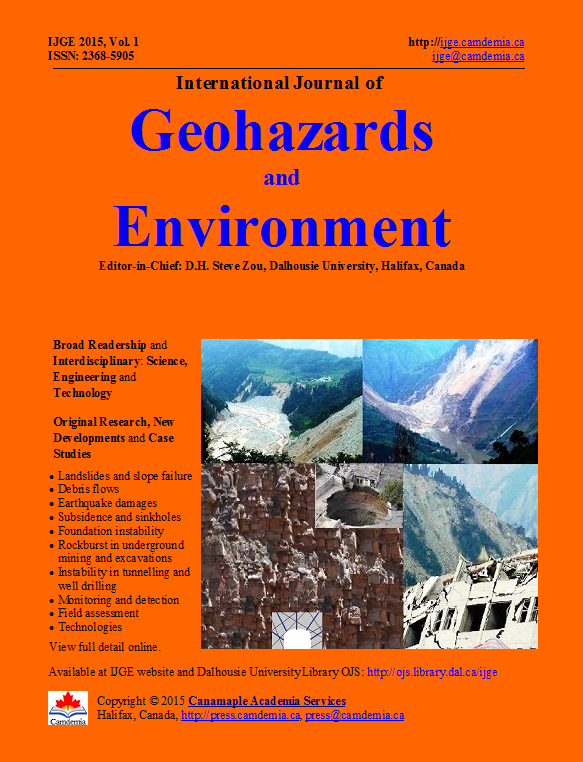Combination of HVSR and MASW Methods to Obtain Shear Wave Velocity Model of Subsurface in Israel
DOI:
https://doi.org/10.15273/ijge.2015.01.004Keywords:
ambient noise, HVSR method, shear wave velocity, subsurface structure, surface wavesAbstract
Estimating possible site effect is an integral part of evaluation of the seismic hazard and reduction of earthquake damages. In regions with low or moderate seismicity as in Israel, the site response should be determined by analytical tools. These computations require knowledge of the subsurface geological structure in terms of shear-wave velocity (Vs) profile down to seismic bedrock. Conventionally, this problem is resolved by joint implementation of Horizontal-to-Vertical Spectral Ratios (HVSR or Nakamura‘s) technique, which is based on ambient noise measurements and seismic methods such as S-wave refraction or Multichannel Analysis of Surface Waves (MASW) method. The first one does not allow deep penetration of seismic waves because of its weak source. The MASW method using 4.5 Hz geophones is restricted in penetration depth of surface waves because of frequency (wavelength) limitations. In this study, we have applied 2.5 Hz geophones and special data processing to provide constructing Vs section to a depth of 100 m and deeper. In combination with HVSR measurements, MASW enables constructing reliable subsurface model, which could be integrated into the seismic hazard assessment. Testing of this combined methodology was carried out at a number of sites with differing geological structures in Israel.Downloads
Issue
Section
License
Copyright, Terms and Conditions
The International Journal of Geohazards and Environment (the Journal) is published by Canamaple Academia Services (the Publisher) online with open access, under a Creative Commons Attribution-Noncommercial license (CC-BY-NC) (http://creativecommons.org/licenses/by-nc/4.0/). Authors (the Authors) submitting papers (the Work) for publication in the Journal automatically agree to the following terms and conditions.
1. Under the license (CC-BY-NC), Authors give permission for others to share and reuse the Work, as long as the original source and author(s) are properly cited (i.e. a complete bibliographic citation and link to the Journal website) and the material is not used for commercial purposes. Any sharing or reuse must however indicate the original CC-BY-NC license terms of the work.
2. Authors transfer and assign to the Publisher all copyright in and to the Work. However Authors retain all proprietary rights except the copyright, related to the Work and also retain the rights a) to use, reproduce, distribute, and publicly display the Work in any medium in connection with the Authors‘ academic and professional activities, such as teaching, presentations and lectures, b) to create derivative works from the Work and to make full use of the Work in future research and publications, c) to authorize others to make any non-commercial use of the Work, d) to make both the pre-published and final-published versions available online in institutional and/or disciplinary repositories or on their own websites with a citation and link to the original paper published in the Journal.
3. Authors warrant that the Work is their original work, it is not copied from anywhere or anyone else, they are totally responsible for the authenticity, originality, validity and accuracy, and the facts and views are their own, that the Work contains no matter which is defamatory or infringes any literary or proprietary rights, intellectual property rights, or any rights of privacy, and that the Work has not been simultaneously submitted to any other journals or publishers. Authors further agree that their manuscripts whether accepted or rejected will not be returned and the rejected manuscripts will be disposed at the journal editor's discretion.
Disclaimer: The Publisher, the Journal and the editors accept no responsibility for statements or opinions expressed by authors. Use of information and materials in the Journal is the sole responsibility of users.


